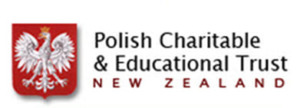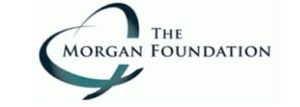Polish Refugees in New Zealand 1944-1951
Exhibitions
Polish Church
Krystyna Skwarko: A year after the closing of the girls’ and boys’ boarding houses Father Dr L. Broel-Plater, the Rector of the Polish Catholic Mission in New Zealand, left for Europe. His place was taken by a Dominican priest, Father S.L. Huzarski, who had moved down to Wellington from Auckland where he had been living for a couple of years.
In 1967 he was transferred back to Adelaide. As a result Father Bronislaw Wegrzyn M.A., the only one of the Polish refugee children to join the priesthood, took on some of the pastoral work. But he was appointed to a New Zealand parish after finishing his studies in Italy and the immense amount of work in his own church did not leave him much time to work among the Polish people. Yet he managed to say Mass for the Poles in Wellington once a month, to hear confessions and to visit the Polish families in other cities and towns twice a year.
After the departure of Father Huzarski a Committee for Pastoral Affairs was formed consisting of the representatives of all the Polish organisations in New Zealand. Dr Wodzicki, frequently referred to as “the spiritual leader of the Poles”, was elected chairman.
The Committee appealed to Cardinal McKeefry in Wellington to establish a Polish chaplaincy for New Zealand. This was agreed by the New Zealand Bishops.
When Bishop W. Rubin visited New Zealand in April, 1966, he promised to ask the Polish Primate, Cardinal Wyszynski, to designate a priest. The long-awaited visit by Bishop Rubin lasted only a few days – three in Wellington, two in Hamilton and two in Auckland. Nevertheless the contact, speeches and conversations with him brought new life to the Polish community and confirmed that the effort to retain the Polish language and traditions was both necessary and worthwhile.
The Bishop kept his promise. In June, 1970, Father W. Lisik of the Order of Christ arrived in New Zealand to begin full-time pastoral work among the Poles.
The Invited; p75-76
Voices
Voices
70 years of Polish Chaplaincy in Wellington, New Zealand. I consider that the Polish Children’s Camp at Pahiatua (from 1944 – 1949) can be regarded as the first Polish Chaplaincy in New Zealand, because there we had a chapel, a church hall, a Polish priest and two Polish Ursuline nuns. Fr Michał Wilniewczyc, who arrived in New Zealand with the children, left the Camp for further studies overseas in 1947 and he was replaced by Fr Leon Plater, a former chaplain of the Polish Commander in Chief. When the Camp closed in 1949, Fr Plater moved to Wellington, to serve the Polish Community there. In 1959 he returned to Europe and our Polish Community was then served till 1967, by Fr Stanisław Łukasz Huzarski, a former missionary in China. During the period 1967 -1970 the Polish Community in Wellington did not have an officially appointed Polish priest. However, a former child from the Polish Children’s Camp, Fr. Bronisław Węgrzyn, who was working as an assistant priest at Saint Martin de Porres Church in Avalon, gladly offered his priestly services to the Polish Community.
In 1970, after some delays, we were able to welcome Fr Władysław Lisik SChr. Since then, for the past 44 years we have had a continuous spiritual care from the priests of the Society of Christ. Over that period the following priests of the Society of Christ, who belonged to the Holy Family Province of Australia and New Zealand, worked in Wellington:
- Fr.Władysław Lisik SChr (1970-1973)
- Fr.Jan Westfal SChr (1974-1982)
- Fr.Dominik Sobala SChr (1975-1978)-as well as chaplain to Polish Community in Auckland
- Fr. Stefan Kocząb SChr (1982 -1984)
- Fr.Stanisław Marut SChr (1984-1985)
- Fr.Ignacy Smaga SChr (1985-1994)
- Fr.Zenon Broniarczyk SChr (1994-2000)
- Fr.Bernard Bednarz SChr (2000-2004)
- Fr.Maksymilian Szura SChr (2004 -2007)
And currently, since 2007, Fr.Tadeusz Świątkowski SChr
Wiadomości Polski – Paźdzernik/October 2014 1
1 Monthly newsletter published by The Polish Association in New Zealand Inc.
The Polish Church, to which a large majority of Poles belong, is part of the Universal Roman Catholic Church and always remains closely linked to it. Religion has had a major bearing on Polish culture, the results of which are borne out in beautiful and rich customs and traditions.
The Primate of Poland Cardinal August Hlond (1881-1943), knowing the needs of Polish emigrants from personal experience, founded a new religious order in 1932 dedicated exclusively to ministry among Poles abroad. The Pope himself gave the order the name “Societas Christipro Polonis Emigratibus” which means “Society of Christ for Polish Emigrants”.
Presently, specially prepared priests from this order – mainly more restrained with regard to changes which have occurred in the Church since the Second Vatican Council – work in many countries.
Two priests from the Society of Christ work in New Zealand: one is based in Auckland and the other in Wellington, because these two cities have the largest group of Poles. Besides the regular ministering to the Poles in these towns, the two priests visit immigrants in other places, especially during Christmas and Easter seasons. (p45)
Polish services, sermons and traditions are specially important for older people, for whom English is a second language.
Assimilation is a natural process, but it should occur gradually, because you cannot change a person overnight, like a part of a machine, without upsetting a spiritual balance. (p46)
Living in Two Worlds; p45, 46
The first dignitary to visit the Polish community in New Zealand was Bishop Władyslaw Rubin from the Vatican. After High Mass in St Mary’s of the Angels, Wellington, we met him at the Polish House. He brought with him the first breath of free Europe, Apostolic Blessing of the Holy Father and greetings and blessings from Bishop Josef Gawlina, who was the Chief Spiritual Chaplain of the Polish Armed Forces in the West during the war. Many ex-servicemen listened with great interest to Bishop Rubin who proved to be a very interesting speaker. Despite his eminence Bishop Rubin was approachable, friendly and greatly interested in the lives of the Polish Community.
Next to visit us was Bishop Stefan Wesoly, also from the Vatican, liaison Bishop between the Holy See and Cardinal Stefan Wyszynski in Poland and Polish people living in the West. He, like Bishop Rubin, took a great interest in our well being. (p220)
… We also had the pleasure to have among us Cardinal Karol Wojtyla of Cracow, who on his way to the Eucharistic Congress in Australia called in Wellington to see us. After the solemn Mass in St Mary’s of the Angels and his inspiring sermon, we met to share a meal in the Polish House in Riddiford Street, Newtown. Once again he spoke beautifully and we all listened to him attentively. The President of the Polish Women’s League, Stanisława Pietkiewicz, asked for his prayers and blessings for ourselves and our families. With a great joy we welcomed him again when he visited New Zealand as Pope John Paul II in 1986. (p220, 222)
Memorable was the visit of Mother Teresa of Calcutta. Again our delegates Stanislawa Pietkiewicz and Irena Mroczek took part in a special Mass at the Home of Compassion in Island Bay, Wellington. This unassuming nun made a profound impression on all the gathering. Her eyes, most impressive, radiated love of God, and compassion towards her fellow men and women. Mother Teresa will be remembered by history as one of the great Saints of this century. Her letter of appreciation for the small donation to her work is one of our precious possessions. (p222)
A Bouquet of Thoughts and Reminiscences: p220,222
Now, the thought that we would be able to see our Pope in Wellington, filled my heart with pride and joy. For this occasion I prepared myself, my husband and our large family. My husband repeatedly reminded me that everyone – young and old – would have to go to greet the Pope. Our wait, full of anticipation and emotion, was further heightened by an telegram from the Nunciate at Lyall Bay, inviting us to attend a private audience with the Pope. Good Lord! Imagine the feelings I experienced! I wondered if I had enough courage, if I was worthy of that moment when I would hold his hand and kiss his relic-studded ring. At the same time I would address his Holiness and assure him that we all remember him in our prayers, and that we pray to God to give him health and strength to further his apostolic work. I simply couldn’t believe it! Seeing my uneasiness, my family asked me if I would be able to handle – emotionally and physically – this great and honoured occasion.
Twenty-third of November 1986 and, co-incidentally, my husband ‘s birthday. In the morning we drove to. Wellington, to the old Polish Girls’ Hostel in Lyall Bay; that beautiful building in it’s charming location. Forty years ago Polish girls lived there under the tender care of the Ursuline Nuns. Now the old Hostel is the seat of the Papal Nunciature. It was in this hospitable house that my husband and I had our wedding reception amongst our nearest and dearest. Time flies by, but memories are alive. It was no wonder that tears began to fill my eyes, because such moments are never forgotten. Soon we found ourselves in the main hall. Organisers, according to a pre-arranged plan, showed us to our places. My husband and I were first in line to greet the Pope.
The Holy Father came in , attended by priests. His face was full of goodness and compassion. You could see the fatigue his journey had caused him, but he smiled sincerely and, approaching my husband, extended his hand and asked ‘How is Mr Polaczuk from Polesie? – I remember you from New Zealand and from Poland’. After that he put a few questions to us about Poles in New Zealand. ‘He didn’t forget us’, I thought to myself, ‘even amongst the millions of people he’d met up until then’. All I could think about after that was what a great privilege it had been to shake his hand and kiss St Peter’s ring. In a quiet emotional voice I said ‘Holy Father, we all pray to the Mother of Czestochowa that you may live long to administer God’s commands’. ‘And I bless you’, replied the Holy Father, moving slowly to the next person. We stood speechless, holding the rosaries given to us as souvenirs. We left the main hall through the entrance door, where dignitaries of the government and other important people were waiting.
I hoped that I would once again in my life be able to see the Pope.
After the audience we went to Athletic Park, to see his Holiness again, attend his Mass and listen to his sermon. I saw that his words and blessings filled the young and old (numbering about 35 thousand) with love, bringing them closer to God and strengthening their Holy Faith. He remembered us Poles and, speaking in Polish, he told us not to forget our native roots which stemmed from around the Vistula River and he told us always to remember that we were Poles.
After Mass, the Holy Father, visited the sick, old and disabled, who had gathered in the Winter Show Buildings. There he spread God’s word and blessed them all.
Solemnly, grateful to his Holiness for his visit, we returned home. There, amongst relatives and friends, we shared impressions of that day.
A Bouquet of Thoughts and Reminiscences: p232, 234
Acknowledgements
The New Zealand Museum Gallery Room “Polish Refugees in New Zealand – Deportees Forcibly Taken to Siberia, Ex-Servicemen and Displaced Persons” was created by a workgroup from Wellington, New Zealand under the umbrella of the Kresy-Siberia Foundation. The group was led by Irena Lowe (Smolnicki), and assisted by Dr.Theresa Sawicka, Wesław Wernicki, Jackie Rzepka, Adam Manterys and Mary-Anne Morgan (Baziuk).
Theresa and Wesław have provided the team with professional assistance in the field of history. Irena, Jackie, Adam and Mary-Anne are all first generation New Zealanders and descendants of family members forcibly deported from Kresy during World War II, who subsequently came to New Zealand either as children bound for Pahiatua Children’s Camp, or as ex-servicemen and women or displaced persons.
We also acknowledge all those Pahiatua children and adults, ex-servicemen and women, displaced persons and New Zealanders who have written about their own or their family’s experiences in books and journals and provided a wonderful history in text, photos and documents over many decades. The team has not set out to rewrite the history but rather to collate the existing stories in a structure so that the interested readers and the following generations can access the stories on-line and view the history as a mosaic. We are humbled by their experiences.
We are grateful to our sponsors who have enabled the publication of this gallery.

Stowarzyszenie Polskich Kombatantów SPK (Polish Ex-Servicemen’s Association)

Polish Charitable and Educational Trust New Zealand

The Morgan Foundation

Dr Zbigniew Popławski – in memory of the Popławski family
Andy and Anthony Bogacki – in memory of the Bogacki and Zielinski family
Eugenia Smolnicka – in memory of Michał and Antonina Piotuch
Jackie Rzepka – in memory of the Rzepka family
Steve Witkowski – in memory of the Witkowski family
Bibliography
Sources
Alexandrowicz, S.Monica 1998. “Z Lubcza na Antypody“. Seria: Ocalić od zapomnienia -1. Zgromadzenie Siótr Urszulanek SJK.
Beaupré-Stankiewicz, Irena, Danuta Waszczuk-Kamieniecka, and Jadwiga Lewicka-Howells. 1989. Isfahan – City of Polish Children. 3rd ed. London: Association of Former Pupils of Polish Schools, Isfahan and Lebanon.
Beaupré-Stankiewicz, Irena, Danuta Waszczuk-Kamieniecka, and Jadwiga Lewicka-Howells. 1987. Isfahan – Miasto Polskich Dzieci. 1st ed. London: Kolo Wychowanków Szkól Polskich, Isfahan i Liban.
Chibowski, Ks. Andrzej. 2012. Kapłańska Odyseja Ząbki. Original language edition. Polska: Apostolicum.
Chibowski, Dr. Andrzej. 2013. A Priest’s Odyssey. 1st English- language edition. Wellington, New Zealand: Future Publishing.
Dabrowski, Stanislaw. 2011. Seeds in the Storm. Waikanae, NZ: Maurienne House.
Ducat, Michelle, Mealing, David, Sawicka Theresa, and Petone Settlers Museum. 1992. Living in Two Worlds: The Polish Community of Wellington Wellington: Petone Settlers Museum/Te Whare Whakaaro o Pito-one
Jagiello, Józef. 2005. One Man’s Odyssey. Edition 2005. Józef Jagiello.
Department of Labour, New Zealand Immigration Service. 1994. Refugee Women: The New Zealand Refugee Quota Programme. Wellington: Department of Labour, New Zealand Immigration Service.
Lowrie Meryl. 1981 The Geneva Connection, Red Cross in New Zealand. Wellington: New Zealand Red Cross Society.
Manterys, Adam, Stefania Zawada, Stanislaw Manterys, and Józef Zawada. 2008. New Zealand’s First Refugees: Pahiatua’s Polish Children (2nd ed.). Wellington: Polish Children’s Reunion Committee.
Manterys, Adam, Stefania Zawada, Stanislaw Manterys, and Józef Zawada. 2012. New Zealand’s First Refugees: Pahiatua’s Polish Children (3rd ed.). Wellington: Polish Children’s Reunion Committee.
Manterys, Adam, Stefania Zawada, Stanislaw Manterys, and Józef Zawada. 2006. Dwie Ojczyzny: Polskie dzieci w Nowaj Zelandii Tułacze wspomnienia. Warszawa: Społeczny Zespól Wydania Książki o Polskich Dzieciach w Nowej Zelandii.
New Zealand Education Deptment. 1945. “Polish Children in New Zealand.” New Zealand School Journal, 1937-vol. 39 No 5, Part III:147-152.
Polish Women’s League. 1991. Wiązanka myśli i wspomnie / Koło Polek = A Bouquet of thoughts and reminiscences. Wellington, N.Z.: The League.
Rodgers, Owen. 2011. Adventure Unlimited – 100 years of Scouting in New Zealand 1908-2005. Wellington: Scout Association of New Zealand.
Ronayne Chris. 2002. Rudi Gopas – a biography. David Ling Publishing Limited.
Skwarko, Krystyna. 1972. Osiedlenie Młodzieży Polskiej w Nowej Zelandii w r. 1944. Londyn, Poets’ and Painters’ Press.
Skwarko, Krystyna. 1974. The Invited. Wellington: Millwood Press.
Spławska, Władysława Seweryn. 1993. Harcerki w Zwiądzku Harcerstwa Polskiego: Poczatki i Osiągnięcia w Kraju oraz 1939-1949 poza Krajem. Głowna Kwatera Harcerek ZHP poza Krajem.
Suchanski, Alina. 2006. Polish Kiwis: Pictures from an Exhibition. Christchurch: Alina Suchanski.
Suchanski, Alina. 2012. Alone : an inspiring story of survival and determination. Te Anau, N.Z.: A. Suchanski.
van der Linden, Maria. 1994. An Unforgettable Journey. Second Revised ed. Palmerston North: Dunmore Press.
Tomaszyk, Krystine. 2004. Essence. Palmerston North: Dunmore Press.
Tomaszyk, Krystyna. 2009a. Droga i Pamięć: Przez Syberie na Antypody. Warszawa: Wydawnictwo Trio.
Zdziech, Dariusz. 2007. Pahiatua – “Mała Polska” małych Polaków. “Societas Vistulana” .
Other Books
Beck, Jennifer, and Lindy Fisher. 2007. Stefania’s Dancing Slippers. Auckland: Scholastic New Zealand. [Children’s Book]
Domanski, Witold (Vic). 2011. A New Tomorrow: A story of a Polish-Kiwi family. Masterton, NZ: Tararua Publishing.
Jaworowska, Mirosława. 2011. Golgota i Wybawienie: Dzieci Pahiatua od Syberii do Nowej Zelandii – Cztery Pory Roku jak Cztery Pory Życia Warszawa: Studio Jeden.
Kałuski, Marian. 2006. Polacy w Nowej Zelandii. Toruń, Poland: Oficyna Wydawnicza Kucharski.
Lochore, R. A. 1951. From Europe to New Zealand: An Account of our Continental European Settlers. Wellington: A. H. & A. W. Reed in conjunction with the New Zealand Institute of International Affairs.
Lubelski, Katolicki Uniwersytet. 2007. Z Sybiru na drugą półkulę : wojenne losy Polskich dzieci z Pahiatua. Lublin: Wydawn. KUL.
Pobóg-Jaworowski, J. W. 1990. History of the Polish settlers in New Zealand, 1776-1987. Warsaw: CHZ Ars Polona.
Ogonowska-Coates, Halina. 2008. Krystyna’s Story: A Polish refugees journey. Dunedin: Longacre Press.
Roy-Wojciechowski, John, and Allan Parker. 2004. A Strange Outcome: The Remarkable Survival Story of a Polish Child. Auckland: Penguin Books.
Szymanik, Melinda. 2013. One Winter’s Day in 1939. Auckland: Scholastic. [Children’s Book]
Turol, Sophia. 2010. Sophia’s Challenging Journey: Self-published.
Wiśniewska-Brow, Helena. Give Us This Day. Victoria University Press.
Other Materials
CraftInc. Films. 2015. Polish Children of Pahiatua. 70th Reunion – HD. Wellington: CraftInc Films. Produced by Wanda Lepionka and David Strong. [Film].
Gillis, Willie Mae. 1954. The Poles in Wellington, New Zealand. Edited by Department of Psychology. Vol. No. 5 Publications in Psychology. Wellington: Victoria University College. [Research]
Krystman-Ostrowski, Teresa Marja. 1975. The Socio-Political Characteristics of Polish Immigrants in Two New Zealand Communities, Department of Politics, University of Waikato, Hamilton. [Thesis]
National Film Unit. 1944. Weekly Review 169. Wellington: National Film Unit.
O’Brien, Kathleen. 1966. The Story of Seven-Hundred Polish Children. Wellington: New Zealand National Film Unit. [Film]
Ogonowska-Coates, John Anderson in collaboration with Halina. 1996. Exiles: The Story of a Polish Journey. Wellington: Ace of Hearts Production in Association with Polish Television. [Film]
Sawicka-Brockie, Theresa. 1987. Forsaken Journeys, Department of Anthropology, Auckland University, Auckland. [PhD Thesis]
Stowarzyszenie Polaków w Christchurch. 2004. Poles Apart: Historia 733 Polskich Sierot. Christchurch: Canterbury Telivision (CTV). [Film]
Tomaszyk, Krystyna. 2009b. The Story of the Polish Children in Isfahan – Iran 1942-1944. [DVD]
Indexes Of Names
Dundalk Bay – Ship carrying Displaced Persons to New Zealand
Goya Voyage 2 – Ship carrying Displaced Persons to New Zealand
Goya Voyage 3 – Ship carrying Displaced Persons to New Zealand
Orphanage – Pahiatua – New Zealand
S.S. “RANGITIKI” – Ship carrying ex-servicemen related to Pahiatua orphans to New Zealand
SS Hellenic Prince – Ship carrying Displaced Persons to New Zealand
Contact
Kresy-Siberia (New Zealand)
PO Box 853 Wellington 6140 New Zealand
e-mail: NZ@Kresy-Siberia.org

